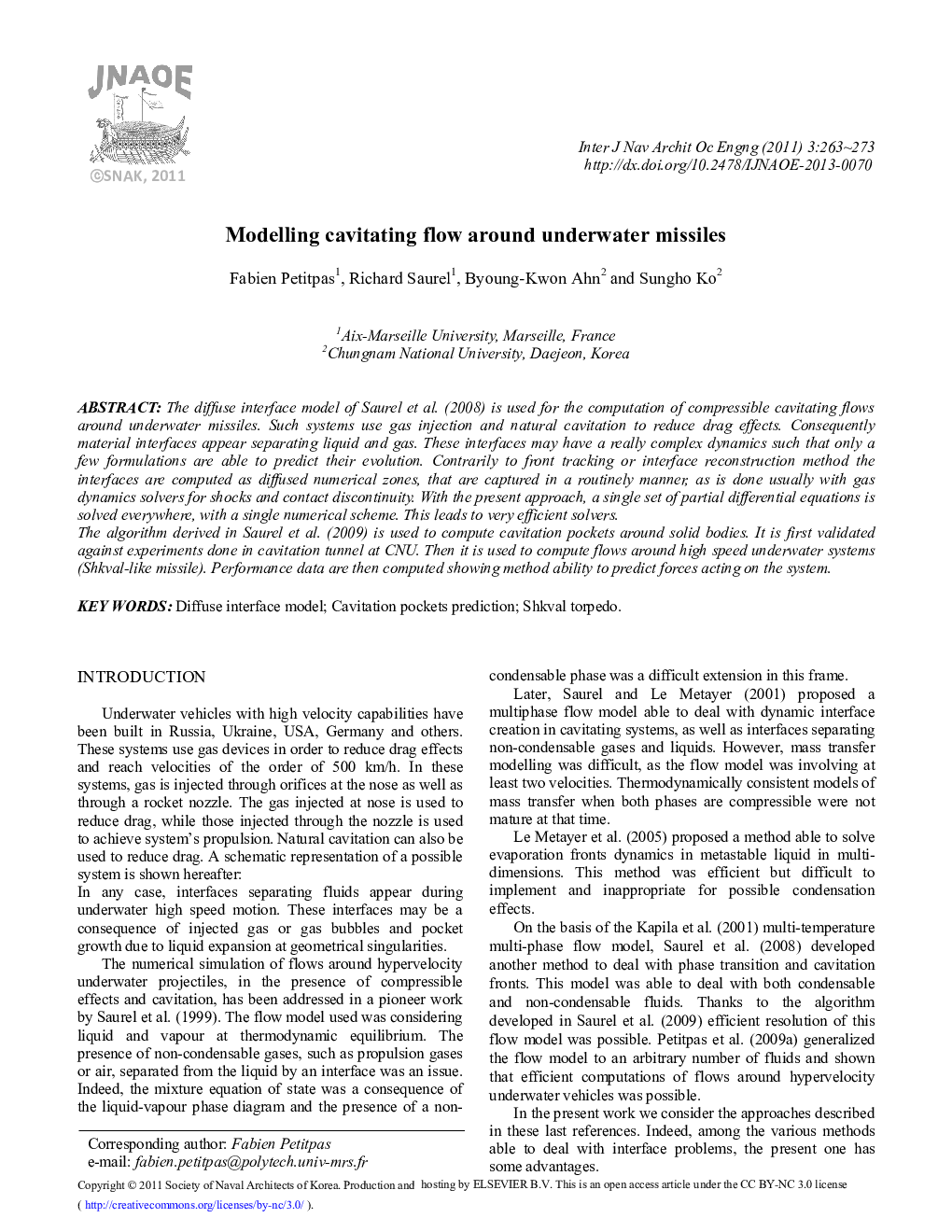| Article ID | Journal | Published Year | Pages | File Type |
|---|---|---|---|---|
| 4451914 | International Journal of Naval Architecture and Ocean Engineering | 2011 | 11 Pages |
ABSTRACTThe diffuse interface model of Saurel et al. (2008) is used for the computation of compressible cavitating flows around underwater missiles. Such systems use gas injection and natural cavitation to reduce drag effects. Consequently material interfaces appear separating liquid and gas. These interfaces may have a really complex dynamics such that only a few formulations are able to predict their evolution. Contrarily to front tracking or interface reconstruction method the interfaces are computed as diffused numerical zones, that are captured in a routinely manner, as is done usually with gas dynamics solvers for shocks and contact discontinuity. With the present approach, a single set of partial differential equations is solved everywhere, with a single numerical scheme. This leads to very efficient solvers. The algorithm derived in Saurel et al. (2009) is used to compute cavitation pockets around solid bodies. It is first validated against experiments done in cavitation tunnel at CNU. Then it is used to compute flows around high speed underwater systems (Shkval-like missile). Performance data are then computed showing method ability to predict forces acting on the system.
